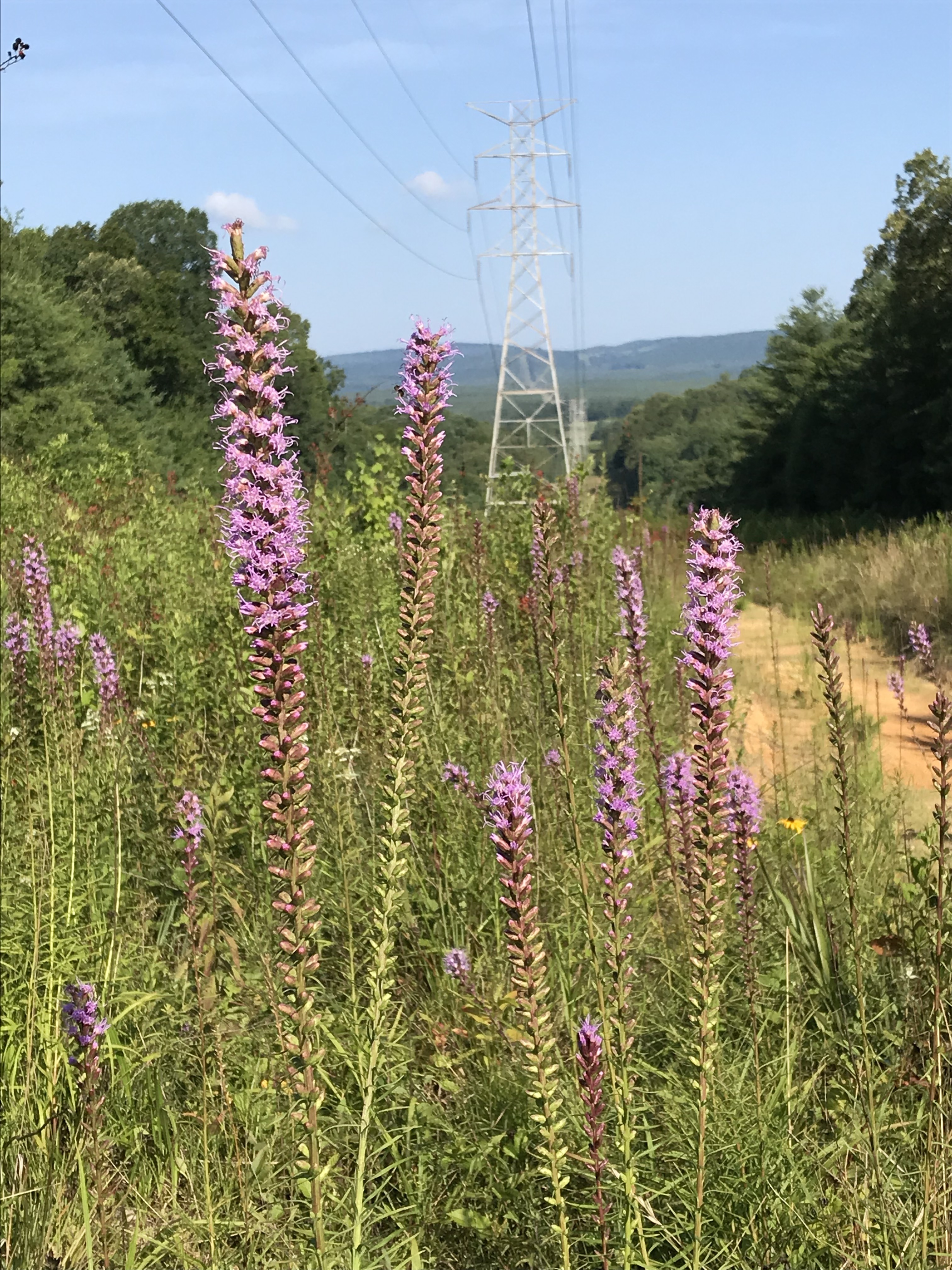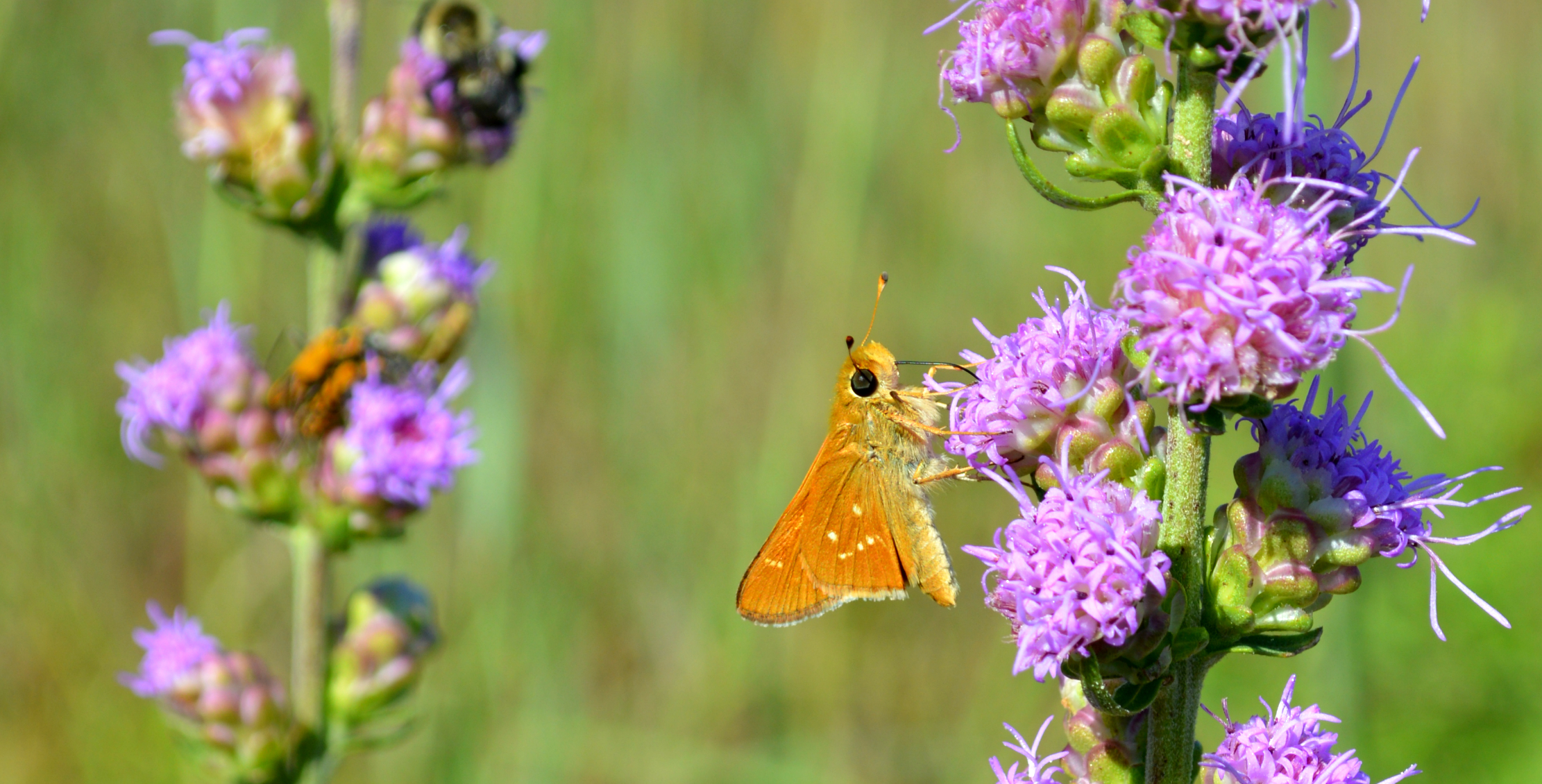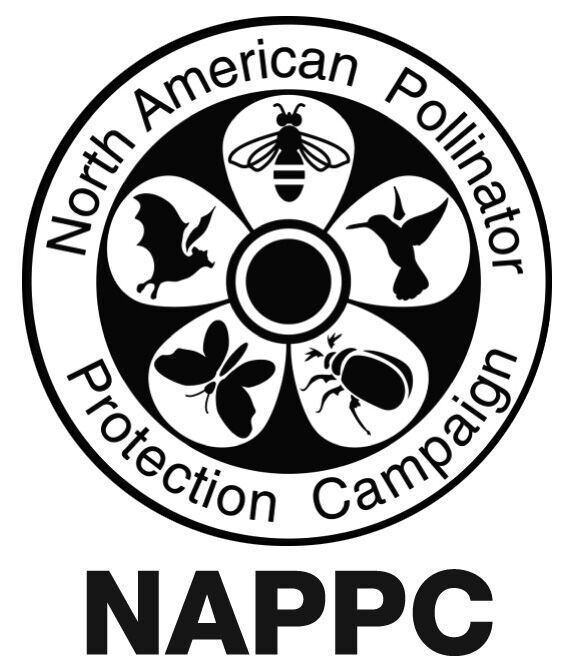Dwayne Estes, Southeastern Grasslands Initiative
Blazing stars and other grassland species growing along a powerline rights-of-way on the Cumberland Plateau in Tennessee. Photo courtesy of Ashley Bennett/EPRI

Food, spices, oils and fibers – pollinators excel at making these items possible. The complexity of the pollinator world is astounding because of the roles they play and their vitality to healthy ecosystems. We celebrate these achievements through the incredible people and projects that are working to conserve pollinators. We hope these stories encourage and empower you to better understand who our pollinators are and what actions you can take to help them.
This month we interviewed Dwayne Estes, Executive Director at Southeastern Grasslands Initiative about their work on the Cumberland Plateau. The Cumberland Plateau covers approximately 10-million acres of parts of Alabama, Georgia, Kentucky and Tennessee. According to Estes, historical records suggest that grasslands were once common in this area. However, over the last century or two, closed canopy forests have encroached and overtaken most of these historical grassland ecosystems. Many of the remaining remnant grassland communities on the Plateau are found along powerline rights-of-ways and in similar sites that have been maintained as open habitats.
Q: How would you describe this effort?
A: The Southeastern Grasslands Initiative, part of Austin Peay State University’s Center of Excellence for Field Biology, the Tennessee Valley Authority, the Electric Power Research Institute and the Mississippi Entomological Museum are studying plant and pollinator groupings along open powerline rights-of-ways. They are comparing them to the adjacent forests that have grown up alongside in the Tennessee and Alabama portions of the Cumberland Plateau. This project has another field season to go, but all the preliminary data indicate that the open habitat created by powerline right-of-ways is much more biologically diverse than the neighboring forests. For example, 90% of the butterfly species found so far have been in the rights-of-ways. The rights-of-ways also have 16-20 times more bees compared to the adjacent forests. These results suggest that powerline rights-of-ways can be vitally important for a wide array of plant and pollinator species, including many rare or declining species.
Q: What got you interested in or inspires you about pollinators?
A: As a botanist, I’ve always loved identifying plants. And I’ve been captivated by the diversity of insects visiting the plants I studied. Pollinators are an important component of our grassland ecosystems. Beyond the roles they play in pollination, they also provide valuable food sources for many of our other grassland-dependent animals. The Initiative believes it is important to preserve and conserve all the different plants and animals, including pollinators, that make up our grassland communities.
Q: Which pollinators does your project/organization seek to help and what makes your efforts unique?
A: The Southeastern Grasslands Initiative seeks to help all pollinators and other organisms that rely on grassland and grassland-related ecosystems in the southeastern U.S. We are one of the only organizations dedicated specifically to conserving and preserving the forgotten grassland ecosystems of this region. For the Cumberland Plateau project, our ecosystem level approach best captures the most grassland species in conservation need, including several federally and state listed pollinators and the plants on which they depend
A Leonard’s skipper on a blazing star. Photo courtesy of USFWS.

Q: What successes have you achieved?
A: Powerlines are full of life! Our powerline rights-of-way study on the Cumberland Plateau is providing scientific documentation of how valuable they can be for grassland-dependent plants and pollinators. In 2021, we were especially excited to discover a previously unknown population of Leonard’s skipper butterfly. Leonard’s skipper is considered imperiled in Kentucky and vulnerable in Tennessee. More generally, the initiative has worked with partners on grassland conservation efforts throughout its focal region of 24 states. Pollinators and other species that rely on grassland plant species are greatly benefiting from this work. Our partners at Mississippi Entomological Museum are also helping to document non-pollinating insects such as grasshoppers and ants which often don’t get much attention. In fact, just a couple of years ago, Dr. Jovonn Hill, museum director, discovered a new species of grasshopper, Melanoplus lindemannii, on the Cumberland Plateau.
Q: What is your biggest challenge?
A: Raising awareness of the value and importance of grassland communities and helping grassland ecosystems gain an equal seat at the conservation table is our biggest challenge. These ecosystems are currently some of our rarest and fastest disappearing in the eastern U.S. Many species of plants, pollinators and birds that depend on grasslands are declining fast and becoming rarer to observe. Yet, these habitats and ecosystems are often not valued or prioritized for conservation in the same way as forests and wetlands.
Q: We’re always looking to improve our network of partners and promote good informational materials and projects that others can learn from. What are some of your favorite go-to references/resources for pollinator or habitat related questions?
A: Forgotten Grasslands of the South: Natural History and Conservation by Reed F. Noss
Q: What is something about pollinator conservation or your project/organization you wish more people knew?
A: Currently less than one percent of our original grasslands remain in the eastern U.S. Many of our eastern grassland ecosystems were historically maintained through disturbances due to fire and grazing by large herbivores. As those disturbance factors disappeared from the landscape, trees that had formerly been suppressed were able to grow and proliferate. Unfortunately, many of our eastern grasslands were already overtaken by forests or developed for agricultural practices early in our nation’s history. The result is that forests have dominated most of the eastern U.S. for so long that they are viewed as “normal,” while the grassland ecosystems (particularly savanna grasslands) they replaced are forgotten.
The reduction of and loss of these grasslands has important implications. These grassland ecosystems contain numerous rare or declining species of plants, pollinators, wildlife and other organisms. The late E.O. Wilson described southern grasslands as “probably the richest terrestrial biome in all of North America,” and said, “to understand, cherish and preserve the great natural heritage of the Southern Grassland Biome should be a priority goal in America's environmental movement.”
Q: What is the best way to get involved in your conservation work?
A: The Southeastern Grasslands Initiative focuses on grassland conservation across a 24-state region. We have a variety of volunteer opportunities where people can assist in grassland conservation and restoration efforts. We also accept donations for those looking to make a financial contribution to preserving and conserving our grassland ecosystems.

Alone no individual or entity can address all pollinator conservation needs, but through collaborative conservation we can and will make a difference for pollinators and the ecosystems they help support. Keep following our Pollinator Conservation Spotlight series to hear more inspiring pollinator conservation stories. Do you know a great project or organization that is addressing critical pollinator conservation topics and deserve their moment under the spotlight? Let us know!
Article contributed by Mara Koenig, U.S. Fish and Wildlife Service for the NAPPC Pollinator Communications Taskforce.
